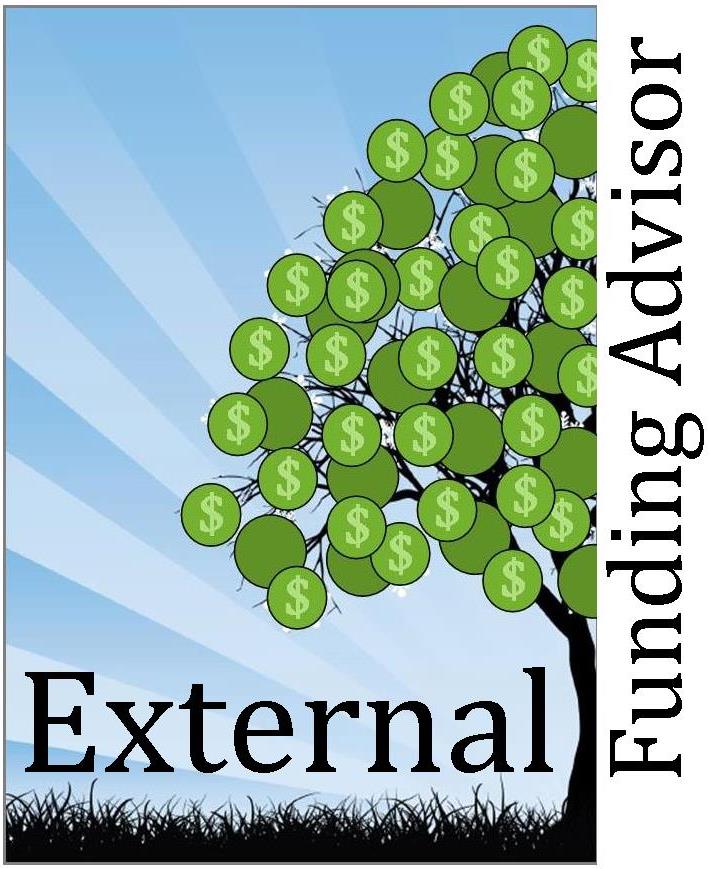Office of Sponsored Programs Administration & Accounting
|
||
|
||
OSP Office Hours:8:00am - 5:00pm: Monday - Friday |
||
Updates from the Director |
||
|
Now Accepting Digital and Scanned Signatures on all Internal Approval Forms The Office of Sponsored Programs is now accepting scanned Internal Approval Forms with signatures rather than requiring the original signatures on page 2. We will accept digital or scanned signatures as long as all approvers' signatures appear on the same page and are clear and legible. You may scan the signed Internal Approval Form and email it to your contact in OSP or to the departmental mail box at jmu_grants@jmu.edu. This change reflects our commitment to ease administrative burden on faculty and staff and is a stopgap measure while we search for and implement a comprehensive solution for automated routing and grants management. This commitment must be tempered with the requirement for proper documentation. Forms that are repeatedly faxed or scanned can become unreadable. Should that occur, we will return the form for legible signatures. This action will not delay the proposal submission process. We appreciate your assistance in verifying the readability of the Internal Approval Form through the routing process. Remember, if you can’t read it, neither can we! |
||
Featured Funding Opportunity |
||
|
Featured Funding Opportunity: NSF Cultivating Cultures for Ethical STEM (CCE STEM) CCE STEM research projects will use basic research to produce knowledge about what constitutes responsible or irresponsible, just or unjust scientific practices and sociotechnical systems, and how to best instill students with this knowledge. CCE STEM funds research projects that identify factors that are efficacious in the formation of ethical STEM researchers in all the fields of science and engineering that NSF supports. CCE STEM solicits proposals for research that explores the following: ‘What constitutes ethical STEM research and practice? Which cultural and institutional contexts promote ethical STEM research and practice and why? Factors one might consider include: honor codes, professional ethics codes and licensing requirements, an ethic of service and/or service learning, life-long learning requirements, curricula or memberships in organizations (e.g. Engineers without Borders) that stress social responsibility and humanitarian goals, institutions that serve under-represented groups, institutions where academic and research integrity are cultivated at multiple levels, institutions that cultivate ethics across the curriculum, or programs that promote group work, or do not grade. Do certain labs have a ‘culture of academic integrity'? What practices contribute to the establishment and maintenance of ethical cultures and how can these practices be transferred, extended to, and integrated into other research and learning settings?’ Successful proposals will include a comparative dimension, either between or within institutional settings that differ along these or other factors. Deadline Date: February 17, 2015 Duration: Up to 5 Years Funding: ~$300,000 per year Limitation: 1 proposal per institution Solicitation 14-546 - this new solicitation is directed towards research that addresses the formation of ethical STEM students, faculty, and researchers at all levels, through a variety of means beyond conventional classroom instruction. |
Timely Topics |
|
What is the best way to pay a student on a sponsored project? - We have received this question often over the years and as with many questions related to sponsored programs, the answer is “it depends.” Here are the pros and cons of a couple of payment methods: Payment through Payroll using a Personnel Action Request (PAR) form: This method should be used any time there is an expectation that the student perform certain tasks in a certain way - in a way you would expect an “employee” to perform. However, you may wish to use this method of payment even in situations where ‘participation’ is the only requirement. The pros to this process includes a method to spread out payments over the course of a semester or year rather then receiving a lump sum. This could avoid the need to obtain a repayment from the student should they stop participating or delaying payment until the end of the project. It also allows the student to immediately start on the project without the need to complete any ‘on-boarding’ processes. Beyond the possibility of having your project charged the employer’s share of FICA taxes (7.65%), the cons of this method relate mostly to the student participant. FICA tax could be charged to the student if they are not enrolled at least ½ time when each paycheck is issued. Secondly, the student would receive a W-2 at the end of the tax year on the earnings from this project that could require them to file state and/or federal tax returns. A second method is Payment through Financial Aid and Scholarships: This method provides a lump sum ‘stipend’ payment, by semester, for participation on the sponsored project. This method may more closely represent how the funds were budgeted in the sponsored program proposal if they are ‘student participants.’ Other pros of this method include not needing to monitor the student’s performance or attendance in the same manner as an “employee,” and it removes the potential of your sponsored project being charged FICA Tax since stipends are exempt from FICA. In addition, this financial aid payment would only be reported as taxable income to the student to the extent their total financial aid grants and scholarships exceeded their tuition and fee costs for the year. The cons of this method may include the need for the student to be enrolled in at least one credit hour for the semester the payment is made. (Summer program participants may not be registered for summer classes). In addition, the ‘lump-sum’ payment might not reflect the actual participation of the student. Also, this payment method would impact the student’s financial aid package, meaning that the student might not receive these additional funds, but they could be used to off-set a loan the student was awarded. While this would reduce the student’s loan burden upon graduation, the benefit of this scholarship money may not be immediately apparent to the student. Sub-recipient Monitoring and Management to Tighten under Uniform Guidance: Announcing changes to how sub-awards are made and subsequently monitored. Under the Uniform Guidance (UG) there are “must” requirements and “should” requirements. Must statements establish required auditable steps for compliant sub-recipient monitoring, including:
Some risk-worthiness factors for sub-recipients to consider “may” include:
Some indicators that a sub-recipient is high-risk:
Impact: Because of tightened documentation and monitoring requirements for sub-recipients, Principal Investigators may be asked to assist Sponsored Programs Administration & Accounting with gathering risk assessment documentation. Monitoring responsibilities for Principal Investigators will strengthen in terms of invoicing and receipt/documentation of technical performance reports. |
Compliance Corner |
|
Office of Research Integrity has added a feedback option to allow our customers to provide feedback (confidentially or anonymously) regarding our services or report any non-compliance issues to Research Integrity. The Feedback option is live on our website: http://www.jmu.edu/researchintegrity/feedback.shtml |


